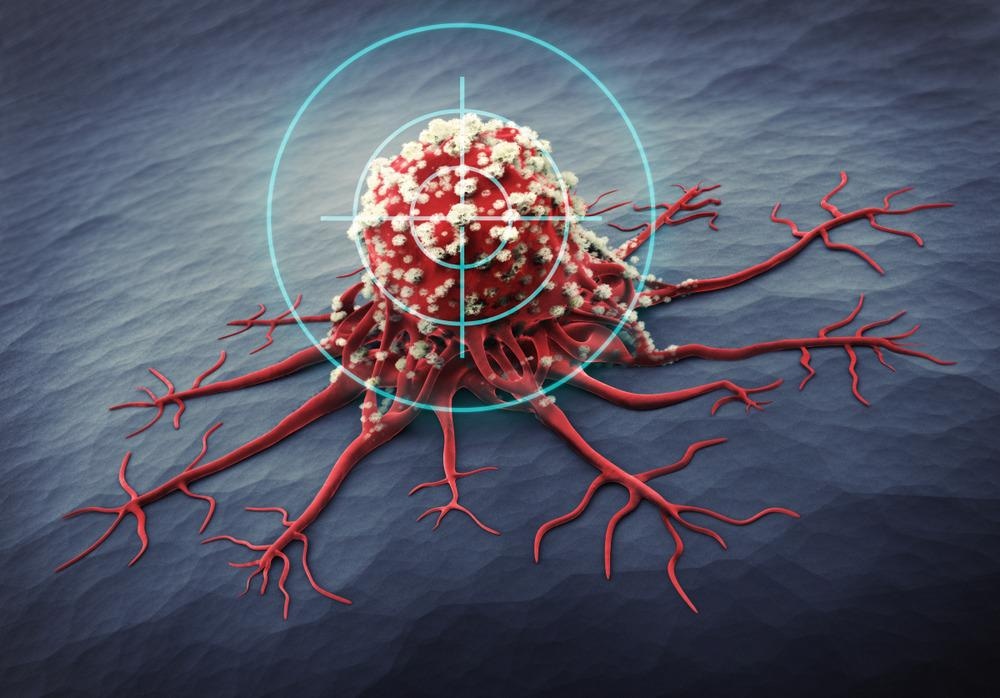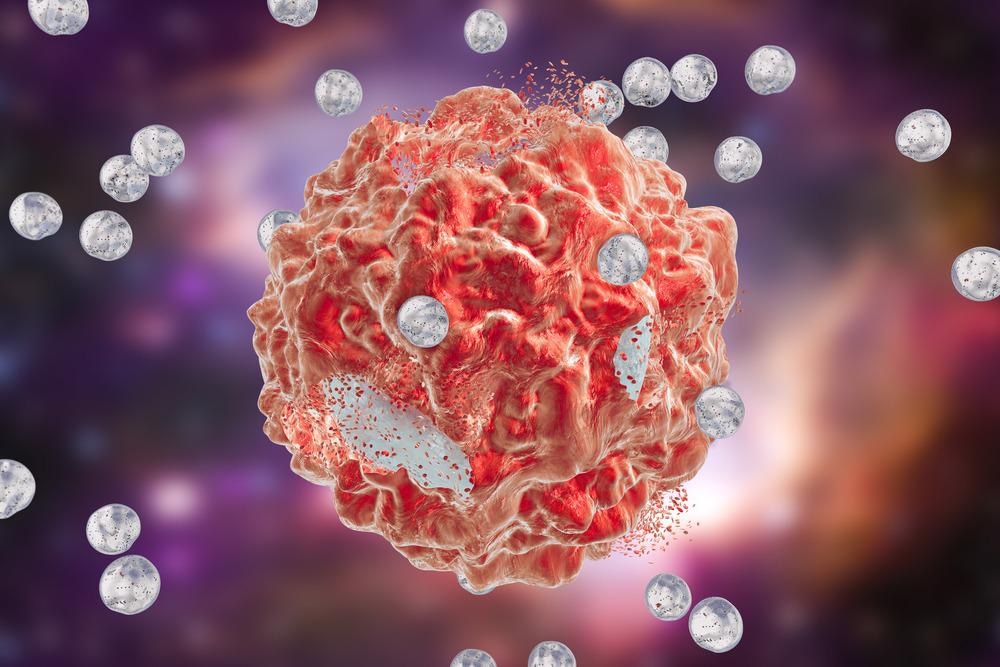The advanced ability of nanoparticles enables them to have enhanced targeting for drug delivery, biosensing, and cancer diagnosis. This article will provide an overview of nanoparticles' targeting ability, which has increased its suitability within the field of medicine.

Image Credit: peterschreiber.media/Shutterstock.com
The field of nanotechnology can be attributed to the American physicist Richard Feynman in 1959, who first described the notion of nanoscience as the creation of smaller machines with the potential for manipulating matter at an atomic level.
Since this vision was presented, research into nanotechnology and its associated applications have grown and advanced with novel uses for various industries, from biotechnology and electronics to biomedicine and cancer therapeutics.
The targeting ability of nanoparticles may be very useful in drug delivery due to the size similarity to cells found in the body, aiding natural interactions and achieving successful treatment.
Additionally, the precise targeting of these particles can also be exploited and ensure the concentration of the drugs is within the problem area, such as tumor sites, in comparison to healthier areas. This allows effective treatment to reduce systemic toxicity from chemotherapy drugs, allowing patients to preserve their healthy tissue.
The precise targeting of nanoparticles can be attributed to its many beneficial characteristics including its nanosize, enhanced permeability and retention effect and surface functionalization.
Nanoscale Size
The small size of these particles results in a large surface area to volume ratio, which is beneficial for drug loading, conjugation, and binding to biological moieties. These characteristics increase drug solubility and stability and are useful for imaging and cancer therapeutics.
Additionally, when nanoparticles are exposed to a biological environment, including serum or plasma, there is an increase in proteins that bind to small nanoparticles with a larger surface-area to volume ratio than larger particles with a smaller ratio.
The exploitation of this attribute of nanoparticles can be used for enhanced targeting. Nanoparticles with enhanced binding with proteins are a building block for biological structures, and the attraction towards nanoparticles can be high.
Research into gold nanoparticles of various sizes has shown the smallest size of 15 nm had the highest accumulation within organs such as liver, lung, spleen and kidney.
Enhanced Permeability and Retention Effect
Additionally, the enhanced permeability and retention effect, or EPR, can also increase the precision targeting of nanoparticles.
The EPR effect can be perceived through the ability of smaller-sized molecules to accumulate and gather within tumor tissue to a higher degree than in normal tissue.
Interestingly, this EPR effect also applies to nanoparticles which accumulate in tumor tissue more readily than healthy tissue due to the formation of leaky vasculature and poor lymphatic system.
This is highly beneficial when targeting tumor tissue for drug delivery for chemotherapy with worldwide nanotechnology research comprising the loading of toxic chemotherapy drugs within nanocarriers.
The use of nanocarriers and their precision targeting for tumor tissue would enhance the efficacy of chemotherapy treatment by providing a precise target for the drugs and reducing the amount of healthy tissue exposed to the toxicity, as is the case within systemic drug delivery approaches.
Precision targeting of tumor areas for toxic chemotherapy drugs enables the cancerous cells to be targeted with more fervor and eliminated. This approach can revolutionize chemotherapy approaches, with decreased drug dosages due to specific delivery within tumor tissue, ultimately increasing cancer patients' quality of life with less systemic toxicity.
However, while this approach is advantageous for targeting cancer therapy, only 1 in 10 drugs have received FDA (Food and Drug Administration) approval. A large problem is seen in late-stage clinical trials through decreased efficacy.
The drugs that received FDA approval within nanomedicine for use in cancer therapy have included: doxorubicin, daunorubicin and paclitaxel, which have all demonstrated modest improvement in overall patient survival.

Image Credit: Kateryna Kon/Shutterstock.com
Overcoming Challenges
While real-world applications of nanomedicine for cancer therapy have not advanced to a large extent, research into nanotechnology and improving the targeting of nanoparticles has continued.
Effective nanoparticles for targeting tumor tissue require avoidance of the mononuclear phagocytic system; this would enable them to be present in the blood circulation for a longer period of time and increase its accumulation in the target tissue.
Other criteria would also include the ability to be internalized by the target tissue and having low toxicity whilst carrying out its task.
Increasing the targeting ability of nanoparticles can be through passive and active targeting, with the former being about drug accumulation based on the drug carrier and tumor microenvironment, such as EPR effect; the latter consists of molecular-ligand-receptor interactions, through surface functionalization.
Surface Functionalization
This component can be significant for increasing the precision of nanoparticles for cancer therapy. The addition of surface ligands on nanoparticles enables them to be more attractive for specific cancer types, allowing them to have a higher targeting ability.
Examples of this have been reported in the literature, with platelet membranes used for engineering tumor-targeting nanoparticles for multiple myeloma and head and neck squamous cell carcinoma.
Nanocarriers functionalized with cancer cell-derived membranes have also demonstrated enhanced tumor targeting along with providing a tumor antigen for possible cancer vaccines.
Future Translation
The use of nanoparticles for tumor targeting as well as targeting, in general, has been established as a field. However, with a low number of FDA-approved drugs, this field which encompasses continuous research, has not yet blossomed into significant clinical translation.
Experiments involving in vitro approaches may not always translate to effective in vivo results, with challenges such as accumulation in the correct target areas, cytotoxicity, biodistribution and clearance after drug delivery.
However, with nanotechnology, scientists are researching various areas to increase and overcome translation difficulties.
This includes surface functionalization, which has included metal oxides, using gold and zinc, as well as receptors that aim to target the high expression found within specific cancer cells; advanced development may be quite close.
Additionally, with cytotoxicity also becoming a barrier for clinical use, biodegradable polymers such as chitosan have also been explored for application in drug delivery for cancer therapy.
Research into stimulus-responsive nanoparticles may also be an efficient approach that would ensure nanoparticles are able to accumulate in cancer tissue with prolonged exposure before being stimulated to deliver chemotherapy drugs.
These nanoparticles would be able to alter their properties depending on their environment, such as within blood circulation and the tumor microenvironment – this would essentially enhance targeting and efficacy of cancer nanomedicine as a whole.
Continue reading: Diagnosing Ovarian Cancer with Carbon Nanotubes.
References and Further Reading
Zein, R., Sharrouf, W. and Selting, K., (2020) Physical Properties of Nanoparticles That Result in Improved Cancer Targeting. Journal of Oncology, 2020, pp.1-16. Available at: https://doi.org/10.1155/2020/5194780
Jang, H., Kim, E., Chi, S., Kim, S. and Yang, Y., (2021) Nanoparticles Targeting Innate Immune Cells in Tumor Microenvironment. International Journal of Molecular Sciences, 22(18), p.10009. Available at: https://dx.doi.org/10.3390%2Fijms221810009
Yang, M., Li, J., Gu, P. and Fan, X., (2021) The application of nanoparticles in cancer immunotherapy: Targeting tumor microenvironment. Bioactive Materials, 6(7), pp.1973-1987. Available at: https://dx.doi.org/10.1016%2Fj.bioactmat.2020.12.010
Bayda, S., Adeel, M., Tuccinardi, T., Cordani, M. and Rizzolio, F., (2019) The History of Nanoscience and Nanotechnology: From Chemical–Physical Applications to Nanomedicine. Molecules, 25(1), p.112. Available at: https://dx.doi.org/10.3390%2Fmolecules25010112
Yang, N., Ding, Y., Zhang, Y., Wang, B., Zhao, X., Cheng, K., Huang, Y., Taleb, M., Zhao, J., Dong, W., Zhang, L. and Nie, G., (2018) Surface Functionalization of Polymeric Nanoparticles with Umbilical Cord-Derived Mesenchymal Stem Cell Membrane for Tumor-Targeted Therapy. ACS Applied Materials & Interfaces, 10(27), pp.22963-22973. Available at: https://pubs.acs.org/doi/10.1021/acsami.8b05363.
Singh, P., Pandit, S., Mokkapati, V., Garg, A., Ravikumar, V. and Mijakovic, I., (2018) Gold Nanoparticles in Diagnostics and Therapeutics for Human Cancer. International Journal of Molecular Sciences, 19(7), p.1979. Available at: https://dx.doi.org/10.3390%2Fijms19071979
Kalyane, D., Raval, N., Maheshwari, R., Tambe, V., Kalia, K. and Tekade, R., (2019) Employment of enhanced permeability and retention effect (EPR): Nanoparticle-based precision tools for targeting of therapeutic and diagnostic agent in cancer. Materials Science and Engineering: C, 98, pp.1252-1276. Available at: https://doi.org/10.1016/j.msec.2019.01.066
Disclaimer: The views expressed here are those of the author expressed in their private capacity and do not necessarily represent the views of AZoM.com Limited T/A AZoNetwork the owner and operator of this website. This disclaimer forms part of the Terms and conditions of use of this website.